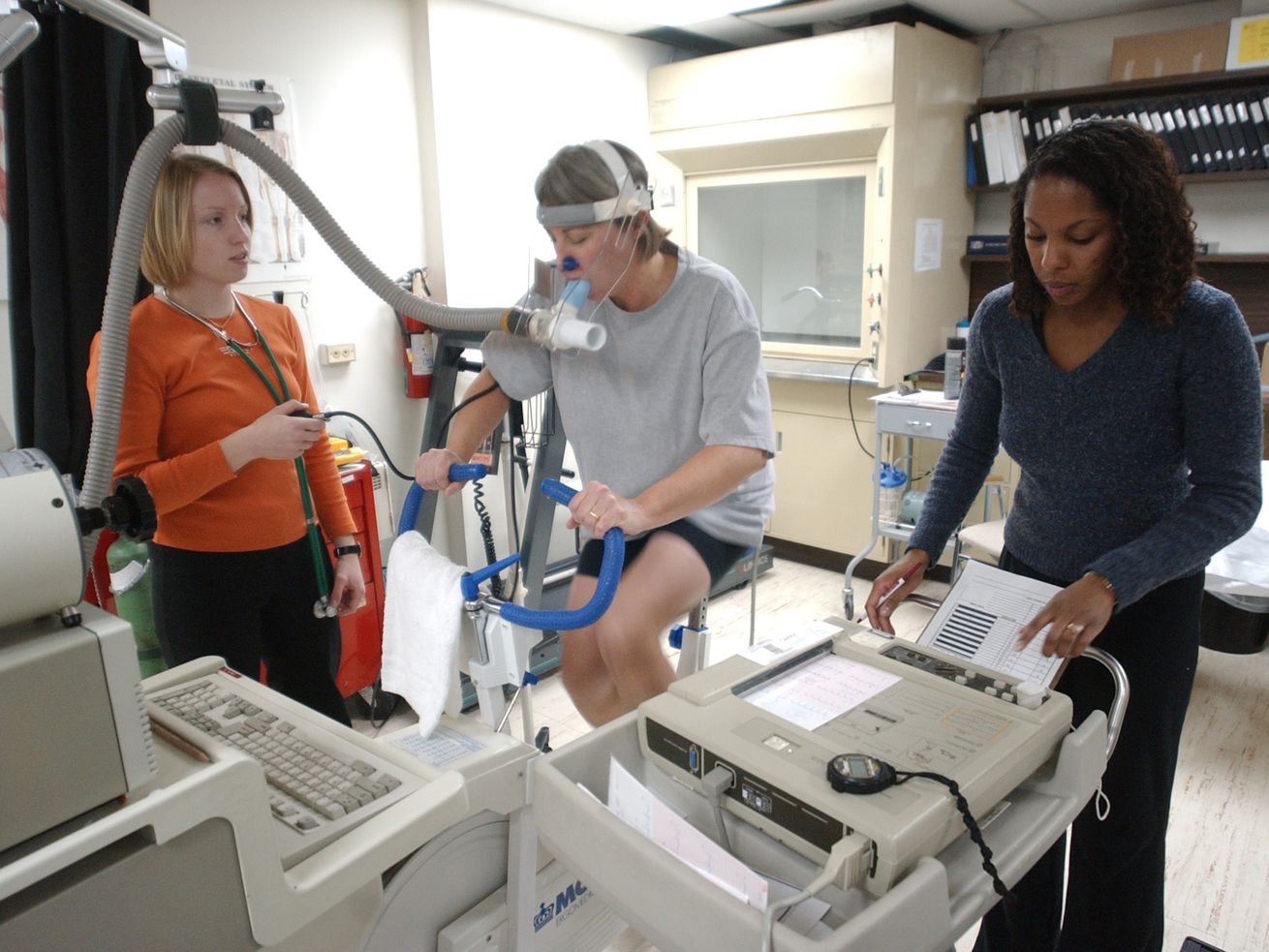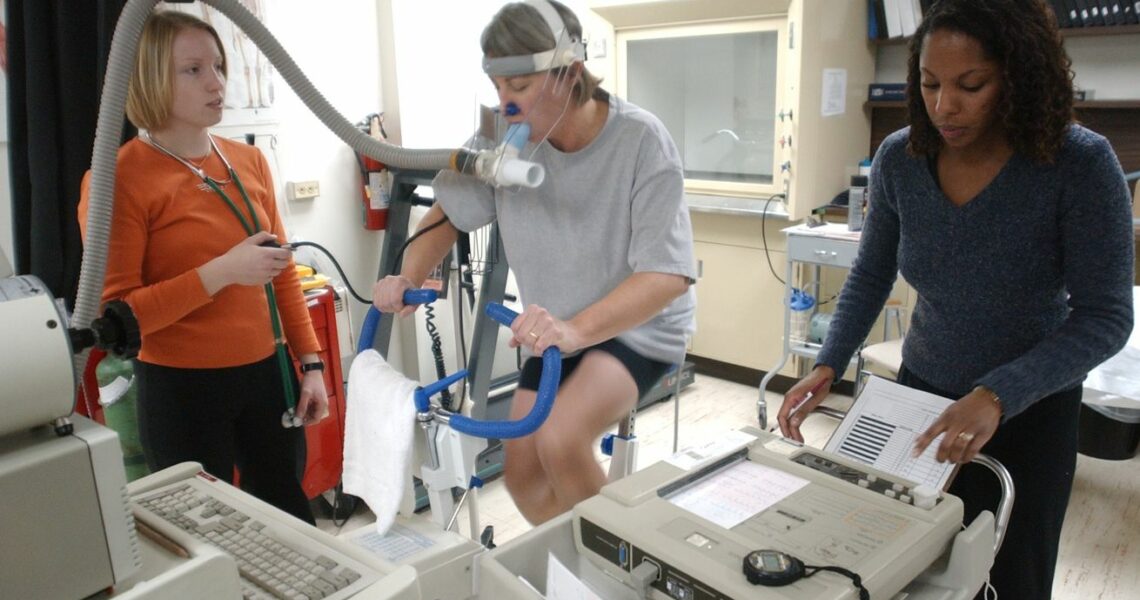
Today’s show is a critical look at some of the most popular health fads of the moment, with return guests Steve Magness and Brad Stulberg
Today’s show is a critical look at some of the most popular health fads of the moment, with return guests Steve Magness and Brad Stulberg, from the Growth Equation and the FAREWELL podcast. We’re talking VO2 max, the benefits of sunlight, so-called morning and nighttime “stacks” (complex multivitamin routines for optimizing your energy and sleep), and Silicon Valley dreams of immortality. Plus, a rant from Derek about the supplement mania of independent media.
If you have questions, observations, or ideas for future episodes, email us at PlainEnglish@Spotify.com.
In the following excerpt, Steve Magness explains to Derek what VO2 max is and why this fitness metric might not be as revealing as many people think.
Derek Thompson: So last year I had you guys on, and we went through some of the hottest health fads at the moment, separating fact from fiction as best we could. I wanted to have you back, not only because last year was a lot of fun and I learned a lot, but also because I have a lot of questions about a new set of hyped-up health advice. Steve, I want to start with you: VO2 max. If you’re a listener who is anywhere proximate to the health and lifespan world, there is a 90 percent chance you have heard the term “VO2 max” in the last year, maybe the last month, possibly the last 15 minutes. This is a health and fitness metric that seems to have exploded into popular consciousness in large part thanks to the bestselling book Outlive by Peter Attia. The New York Times just recently, last week, called VO2 max “the best way to track fitness and longevity.” The best way to track fitness and longevity. Steve, ground-floor level please, what is VO2 max?
Steve Magness: I’ve got to say, as an exercise scientist, it humbles me that this has now come out as the thing when we’ve been able to measure VO2 max since about the 1930s. But anyways, what is VO2 max? Quite simply, it’s the maximum amount of oxygen that we can utilize. So it’s essentially how much oxygen you can breathe in, and then go through your circulatory system, and then utilized by the muscles, and that’s what it is. So the way we measure it is pretty simple. You get put on a treadmill or a bike in an exercise science or a doctor’s lab. They hook you up to a mask. That mask has a tube that runs into a machine or a bag that essentially measures how much oxygen you’re breathing in and out, and then they ramp up the exercise. You start really easy, and then the speed gets faster on the treadmill every one or two minutes, depending on the protocol.
And you keep that going until essentially you cry uncle, which is you are so exhausted that you either fall off the back of the treadmill, which happens with elite athletes, or, more so with regular people, you just scream, hit stop, and just are done. And generally, at the end of the fastest that you’re going on that treadmill, your oxygen consumption is at its highest level, and whatever that number is is your VO2 max. And it’s a surrogate indicator of cardiovascular or aerobic fitness. And the way I like to describe it is it’s the measure of the engine size of the car. So it’s that big number that we use holistically to look at aerobic fitness.
Thompson: Does it work? Does it teach us anything useful?
Magness: That’s a good question. So it does, but I’d argue that it’s not as much as we think it does, and there’s a couple of reasons here. I just used the analogy “It’s like the car engine,” OK? When it comes to performance, VO2 max among elite athletes doesn’t correlate that well once you’re pretty good, meaning if I lined up everyone who ran in college all the way to the Olympic champion and looked at their VO2 maxes, I couldn’t tell you who was the best of the best because they all have pretty big engine sizes, and it doesn’t determine performance. So the correlation to performance isn’t that good. And if we use the car analogy, it’s, like, of course not. We need to know the size of the gas tank, your miles per gallon, whether you can convert that energy from the engine into torque in the tires, all those things.
Same thing applies to humans. When we look at longevity, which is health or mortality, which is where it’s reached its peak here, it does correlate very well to a decrease in mortality. There’s been a slew of research that shows that cardiorespiratory fitness, if you compare the highest of the high group versus the lowest, the lowest group has about a five times increase of mortality. But the thing is, Derek, and this is the key part: VO2 max is an indicator. And if you look at the vast majority of those studies, they don’t actually use VO2 max.
Thompson: So what do they use?
Magness: They use the speed that you reached at the end of the treadmill when you called uncle, when you quit. So I think this is really important because we confuse the thing. We say, “Oh. It’s VO2 max. It’s VO2 max. It’s VO2 max.” Vast majority of times in these mortality longevity studies, it’s not. We use that speed, or incline, or watts on the bike, and say, essentially, “How fast can you get until you’re exhausted on this test?” And that is what correlates to mortality, longevity, etc. I think, again, VO2 max matters. It correlates to that. But I think it gives us a very simple, more profound solution, which is you don’t need to know your VO2 max number. You just need to know your fitness.
This excerpt was edited for clarity. Listen to the rest of the episode here and follow the Plain English feed on Spotify.
Host: Derek Thompson
Guests: Steve Magness and Brad Stulberg
Producer: Devon Baroldi
Subscribe: Spotify

